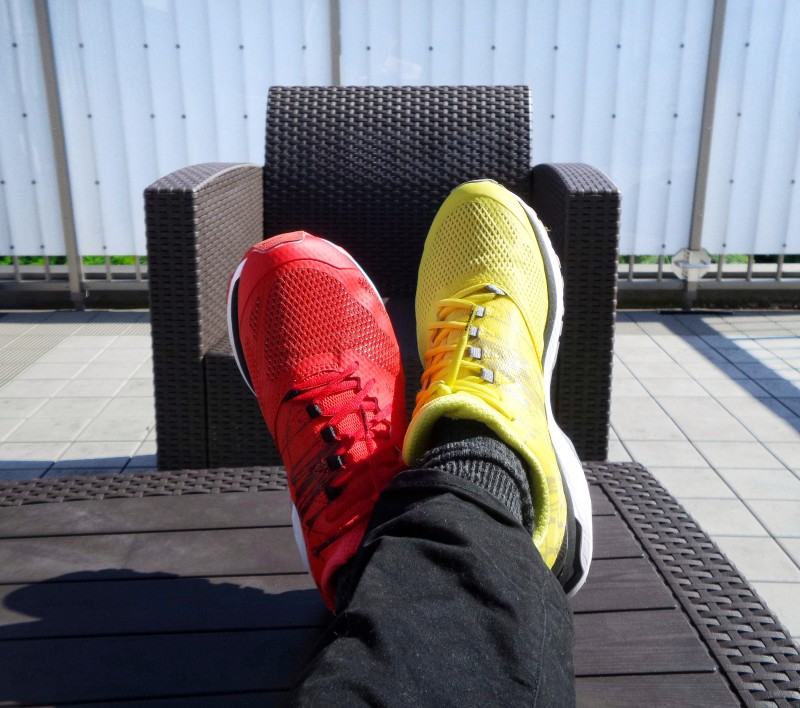
Have you ever read the book Catch-22?

(Don’t worry, we’re going somewhere with this).
In the book, author Joseph Heller describes a situation in which World War II pilots could request to be excused from active duty on the grounds of insanity.
The catch?
According to the army’s psychologists, only a sane pilot would be concerned enough about their own safety to request this.
Thus, the pilot was sane and able to fly more missions.
A bit of a head-scratcher, no? And how on earth does this tie into product teams working on digital products?
Here’s how.
Creativity vs. experience: The Catch-22 of building a successful product team
The Catch-22 Heller described is a form of dilemma, in that the conditions of the quandary effectively cancel each other out.
If you’re a product owner or team leader, you’re responsible for building a strong team.
A successful team.
An innovative team.
To do this, you’ll want the most experienced people you can find. That said, to ensure you keep innovating and keep driving the product forward in previously unexplored ways, you should also want the most creative people.
The catch? These people are usually not one and the same.
Experience the enemy of creativity
In fact, depending on who you ask, experience can sometimes be the enemy of creativity. After all, the longer people are in their jobs, the more likely they are to become comfortable with the way things have always been done before.
That ‘status quo’ mindset can stifle creativity.
The result?
Product teams who become somewhat complacent.
In short, your team will be able to deliver a functional product — one that checks all of the right boxes.
But, without the creative spark, it’s unlikely to do anything new.
So, with all of this in mind, let’s dig into creativity vs. experience in more depth; to find out how you can build a product team that successfully balances both.
The difference between experience and creativity

To keep this discussion as clean as possible, let’s first explain the difference between experience and creativity by way of definition:
Experience is something we all gain by simply completing tasks in our work or personal lives. If you’ve done something more, you know how it works, you know what to expect, and you should be able to do it again. Experience, by its very definition, is a backward-looking concept. In order to draw on your experience, you need to think backward in time and remember how you completed this task in the past.
Creativity, on the other hand, is a much more free, unrestrained concept. It’s an inherently forward-looking practice because creativity doesn’t rely on any prior knowledge. Instead, it challenges a person to consider things that have never been done before. The most innovative digital products will always be built by the most creative teams because they are free to think in different — and sometimes almost counterintuitive — ways to solve problems.
The experience / creativity dichotomy is nothing new.
Humans have always struggled when it comes to the comfort of the things we know vs. the world of the unknown. But this latter place is often where the really good stuff is found.
Take the motor car, for example.
While there is plenty of contention about whether he actually said it, there’s a famous phrase attributed to industrialist and motor car developer Henry Ford. And it applies here:
“If I had asked people what they wanted, they would have said faster horses.”
This is an excellent example of experience standing in the way of creativity. Because all people had known was the use of horses to get around, not a single person could have conceptualized the motor car (well, except maybe one).
For that reason, given carte blanche, the experience would tell them to make the horses faster — not to change the mode of transport for something entirely new.
Forward-thinking
So, if it weren’t for forward-thinking, creative engineers, we might all still be riding horses on our roads to this day. This is the real power of creative thought. And it applies just as much in the digital product space as it did back then during the early days of the Ford Motor Company.
The rise of disruptive technology (or, what happens when creativity wins)

“Disruptive technology” is a phrase that’s thrown around a lot these days, but what does it really mean?
When it comes to our discussion on creativity vs. experience, disruptive tech is actually the perfect example of what can happen when creativity is allowed free-rein on a project.
Disruptive technology is essentially one that addresses the same problem as other companies but in an entirely different — and potentially paradigm-shifting — way.
Similar to our example with Mr. Ford’s horses, many modern technology companies have forgone experience (and, some might say, common sense) in lieu of chasing a different dream — with mixed results.
Google “world’s most pointless inventions," and you’ll soon see what we mean.
But disruptive tech that does work has enhanced our lives in many ways.
Here are just a few examples of disruptive tech companies, that’ve shown the value in choosing the path of creativity over experience:
Tesla, the electric motor car company, is perhaps the best-known example of disruptive tech at work. Rather than relying on the conventional internal combustion engine, Tesla only produces electric vehicles. They’re far better for the environment and, so it seems, are the way of the future.
Uber is another vehicular company that’s disrupted the landscape of how we live. Riding in a taxi used to be a matter of calling around to see who was available or waving your arm on the side of a busy street — neither of which are ideal, really. With Uber, users can order a car to come to exactly where they are, track it at every step, see how other users have rated the driver, and then pay contactless. That’s frictionless creativity in action.
Monzo (and other fintech banks) are making the way we manage our money easier all the time. Where once we’d need to visit a branch, open our checkbook, or speak to a teller to get our money sorted, it’s now a matter of simply opening an app, scanning a fingerprint, and getting on with life.
Now that we’ve seen the power of creativity in action let’s consider exactly why you might want to bring more creative folks into your product team — rather than relying on experience alone.
How experience (sometimes) gets in the way
Innovation is an elusive thing.
Being innovative
For some of us, being innovative is as simple as getting out a pen and paper. For others, it’s a painful slog. But no matter where you land on the innovation spectrum, we can all agree that true innovation is what drives us forward as a race.
Some of the greatest technologies of all time have come from people who challenge the status quo.
But isn’t there room for experience, too?
Without getting too deep into office politics, any product development team is going to be influenced by their colleagues — especially those in leadership roles or who’ve simply been there longer and know the brand more.
This isn’t a problem in itself, provided the processes are in place to make decisions in a smart and fair way (like Priority Poker).
But, let’s face it, that’s not always how things are in real life.
In the real world, the more experienced members of a product team might actually overrule the opinions of their newer (and perhaps more creative) colleagues. This is a shortcut to product roadmaps that are safe, stable, and about as far from innovative as you can get.
It’s tricky to say exactly why it happens like this, but in such scenarios, you’ll often hear phrases like, �“This is the way we’ve always done it.”
(In fact, if you want to talk creativity-stifling red flags, that one’s a humdinger).
Because product teams are often tiered setups, the pecking order will often dictate exactly how the job gets done. In addition, you’ll probably come across one or two personality types within product teams who can also cause problems.
How many of these phrases have you heard (and potentially rolled your eyes at) during your product career?
“I know what the user wants.” This one is actually pretty dangerous because it can totally remove any upward progress or exploration of new ideas in terms of user experience. Just because one member of the team thinks they know what users want does not automatically mean nobody else should think about — and share — other ideas.
“That’s just not possible." Imagine jumping back 100 years in time and trying to describe the internet, or smartphones, or Alexa. These things would seem like complete science fiction — and yet, here we are. If anyone on the team is saying something is impossible, that might be even more of a reason to give it a go.
“Let’s revisit that in a future release.” If you hear this one, it’s safe to assume the person who uttered these words has no interest in ever revisiting this idea. But, with the right combination of experience and creativity on the team, that doesn’t mean that nobody should. Revisiting ideas (with a prioritization or roadmapping tool like ours, for example) is a great way to ensure innovation is captured at the source.
Finding the perfect balance for your product team
Okay, we’ve talked a lot about problems so far. So let’s dig into some solutions.
There is no doubt that both experience and creativity are useful in any product team. It’s beneficial to the product's feature set and, ultimately, the value to the customer.
But without enough experience, the basics might not be handled correctly, and the project could fail. Likewise, without enough creativity, you wind up with a product that is cookie-cutter, old-hat, and unappealing to users.
Hey, there’s that old Catch-22 again.
What’s the answer here? How do we break this log jam and ensure that your product team comprises a blend of people from across the spectrum of experience and creativity?
Well, we’re by no means experts, but we’d like to think we know a thing or two about working as a team. So here are our top tips for finding the perfect balance of creativity and experience:
Make time during the hiring process to assess creativity in candidates. When hiring new members of your product team, it’s easy to play it safe. That means checking on educational qualifications, years in previous posts, job responsibilities, and so on. These are all valuable insights into a person’s experience, but they don’t tell you much about how creative they are as a person. If you want to ensure you’re hiring someone with a bit of spark, consider being innovative yourself and throwing some curveballs into the hiring process to assess creativity. This could be anything from asking them how they’d reinvent an existing industry to asking them to write a short story — you never know what you might discover.
Bring your veterans and your rookies together. It’s easy for any product team to become siloed, especially when you have a broad mix of experience levels in there. This can lead to the more senior team members making experience-based decisions and foregoing the opinions and input of newer, and perhaps more creatively-flexible, peers. The solution is simple: have them work together. By doing this, you remove the negative impact of silos, and you’re able to bring experience and creativity together in a straightforward way.
Deliver training aimed at experience and creativity. It’s clear that there’s a bit of a gap on both sides of this argument. The creative folks need experience, and the experienced folks often a healthy dose of “But what if…?”. Rather than letting both of these groups continue to grow apart, you could implement training to help each of them learn that missing skill. For the newer blood, of course, any new skill will build experience; and for the more established blood, being exposed to more innovative ideas — like disruptive tech trends — might be helpful for their outlook, too.
Make the change to a more agile business culture. Businesses have always been defined by some level of risk-aversion. After all, taking risks is to open up the possibility of failure and the loss of revenue. So it’s totally understandable that so many companies still rely on what’s come before in order to develop their digital products. But getting too formulaic doesn’t really get anyone anywhere — and it could even damage revenue just as much. What happens if a rival product comes along and blows you out of the water? By allowing your business to be more agile and responsive to change, you can nurture and encourage creativity — even from those more experienced members of the team.
Of course, while there are plenty of tactics you could try out to spark creativity and leverage experience, it really comes down to the people on your team to make it happen.
As with any relationship in life, communication is probably the biggest contributing factor to a team failing to innovate. If creative people feel stifled while experienced people feel threatened, you’ve got yourself a recipe for a disastrous product development cycle.
It should be obvious, then, that tackling this problem head-on will help your product team to deliver a product that:
Delights customers with new solutions to old problems.
Delivers on the basics and everything the end-user expects from previous products.
Continues to grow and develop with new features as the roadmap timeline progresses.
Is supported by a product team who really cares about the product and feels like they’ve contributed equally towards it.
Sounds like a dream, right? Right.
But it can be a reality, too.
Make sure every voice in your product team is heard, with airfocus
If one thing is clear from this debate, it’s this: to create a product that’s relevant and innovative. You need all voices to be heard — both the most experienced members of the team and the newest additions.
Whether it’s the veterans with their wealth of development experience and user insight, or the new blood with their fresh (and sometimes even a little bit off the wall) ideas, it all helps create an exciting atmosphere that nurtures success. Not only that, but innovation won’t be stifled, and the product will benefit as a direct result — and that’s a win-win for everyone.
With airfocus, you can rest assured that both sides of this Catch-22 are not just voiced — but heard. Our roadmapping and prioritization tools can help you plan your development cycle in fine detail, make group decisions using scientifically proven models like RICE, and much more.
Start your free trial today and discover first-hand just how unifying the airfocus experience can be.
Valentin Firak

Read also



Experience the new way of doing product management

Experience the new way of doing product management




